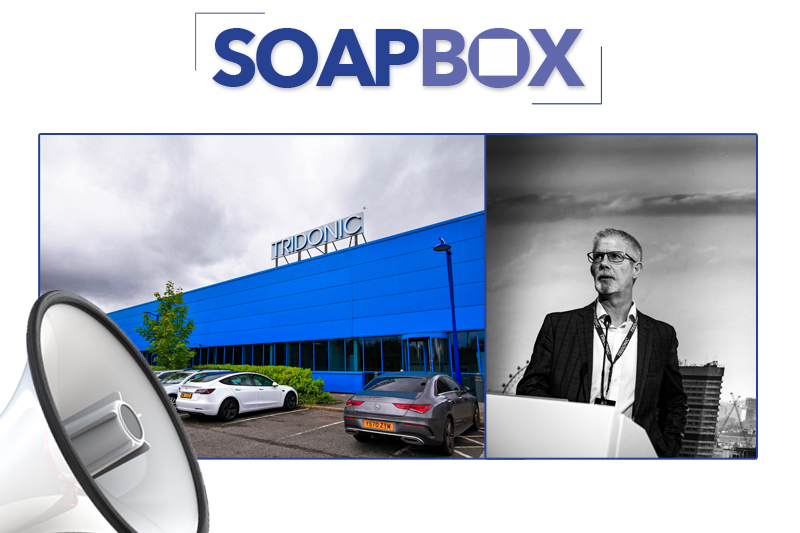Joe Brawn, Product and Marketing Director at Vent-Axia, sets out the company’s sustainability targets and how electrical wholesalers can play their part in the UK reaching its 2050 net-zero goal.
Despite the Government appearing to slow down on its route to net zero, the UK still has the legal target to meet net zero by 2050. Rather than putting sustainability on the back burner to meet these targets it is important to make changes now to ensure we meet this goal.
At Vent-Axia we are committed to a low-carbon future with the health and wellbeing of people and the planet at its core. We have been leading the ventilation industry since 1936 and it is something we continue to do with our aim to become net zero by 2040, 10 years ahead of the UK’s 2050 net zero target. Currently, the carbon avoided by Vent-Axia’s group products is around four times the group’s operational carbon footprint.
Carbon avoidance is the only way for the UK to reach net zero with the decarbonisation of buildings an essential part of this, which is why it is important for the whole supply chain to play its part. We therefore aim to provide our customers with the products to help them on their decarbonisation journey while also continuing our commitment to providing effective ventilation to improve indoor air quality (IAQ) and comfort for inhabitants – since 70% of the air we breathe in our lifetime is air inside buildings.
Strategy
To illustrate our commitment, Vent-Axia has set clear sustainability targets including increasing sales of our low-carbon products and increasing the use of recycled material in our manufacturing. As part of our sustainability strategy Vent-Axia has developed three pillars that orientate and deliver our long-term objectives which are: Product – engineer sustainable solutions; Planet – improve environmental performance; and People – connect people together.
These focus areas have driven several targets including Vent-Axia setting a target of 70% of our sales revenue to be from low-carbon products by end of FY2025. Through our commitment to our targets the company has successfully reached this milestone ahead of the target date. At Vent-Axia we have also set a target for 90% of the plastic we use in our own manufacturing to be from recycled sources by the end of FY2025. Currently this figure is already at 83% and so we are on track to hit the 90% figure.
Heat recovery
Vent-Axia recognises the importance of cutting carbon emissions in the built environment since buildings account for 40% of energy use in Europe and approximately 35% of emissions. To meet the Government’s 2050 net zero target, buildings need to decarbonise which will involve the wide-scale electrification of heating, a move away from fossil fuels, as well as significant improvements to air tightness and building insulation. Heat recovery ventilation will be a key technology to help deliver the final piece of the carbon avoidance by preventing heat loss, so as a technology it is set for significant growth. This is a huge opportunity for the electrical industry, so it is an important time for electrical wholesalers to familiarise themselves with the products.
To meet the necessary carbon reductions buildings are becoming more thermally efficient as they are insulated, and their air tightness is increased to avoid heat loss. However, without considering ventilation alongside these measures a building can end up with condensation, mould and poor IAQ. Energy efficient heat recovery ventilation therefore supplies a solution that provides healthy filtered air while recovering heat that would be otherwise lost.
At Vent-Axia we collaborate closely with our customer base to ensure we develop the products customers need to decarbonise. For that reason, we are constantly improving the efficiency of our products and reducing their carbon intensity. For our latest heat recovery ventilation products, the Sentinel Apex commercial heat recovery system and the Lo-Carbon Sentinel Econiq residential Mechanical Ventilation with Heat Recovery (MVHR), we can provide TM65 data to help customers understand their wider life cycle assessment.
Retrofit
Heat recovery ventilation does not only benefit new build residential and new build commercial properties. With most of the housing stock that will exist in 2050 already built, it is imperative we improve the heat loss of existing stock through deep, energy efficient refurbishment. This is where electrical wholesalers can step in offering electricians heat recovery ventilation solutions. As existing homes improve with greater levels of insulation and become more airtight, it is important that they are adequately ventilated in line with Building Regulations, Part F. Vent-Axia has therefore specifically developed a heat recovery range to provide increased ventilation whilst minimising unnecessary heat loss through heat recovery technology in existing homes.
Historically heat recovery ventilation has been delivered by a central ducted heat recovery unit but this presents a number of issues for electricians in retrofit applications. The biggest barrier is the difficulty to install complex duct runs within an existing dwelling. Vent-Axia has therefore specifically designed the Heat Recovery Retrofit Solution for easy, lower cost retrofit of heat recovery to save maximum energy and emissions. It replaces a complex central ducted heat recovery unit, with smaller easy to install wall and ceiling units, dramatically reducing the ducting and therefore the cost of the installation. The range consists of three different dMVHR units comprising: the Lo-Carbon Heat Save, an alternative flow heat recovery unit; the Lo-Carbon Tempra, a wall mounted heat recovery unit; and the Lo-Carbon Calido, a heat recovery unit that utilises a simplified ducting system that can run within the home or in the roof space. These three units can be used together to help maximise energy savings, by introducing heat recovery into a property,
With carbon reductions becoming ever more important as the 2050 target approaches now is the time to makes changes. Electrical wholesalers that are prepared for decarbonisation will benefit both themselves and their customers. We can work together to help reach net zero.
For more information, click here





